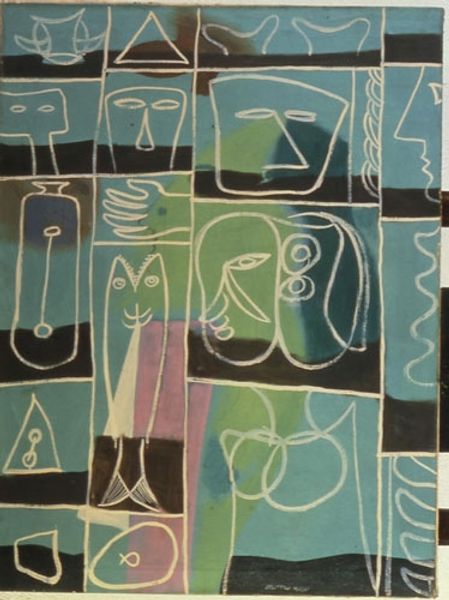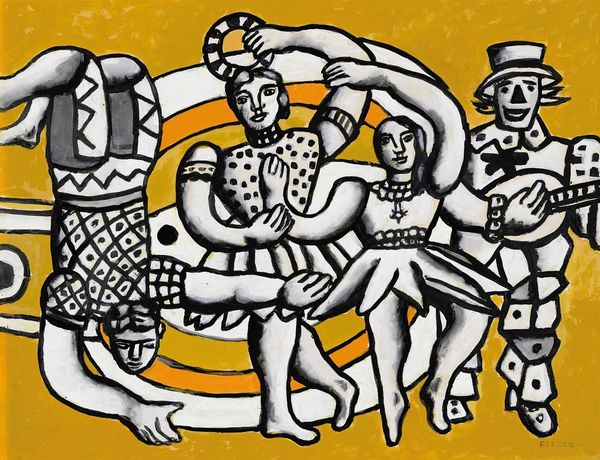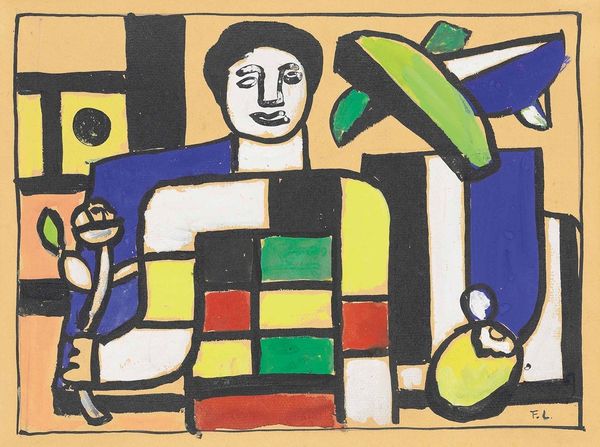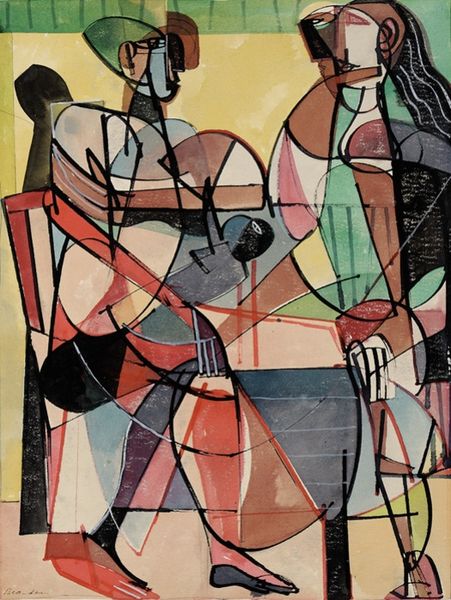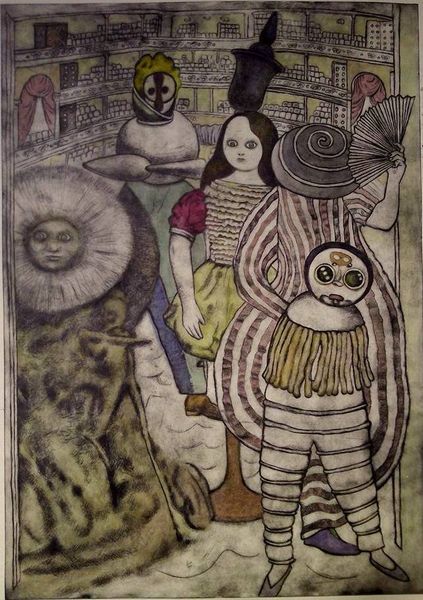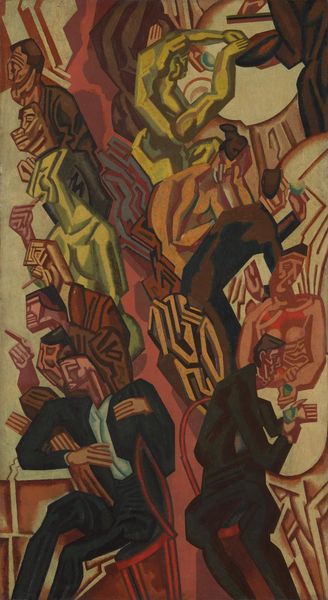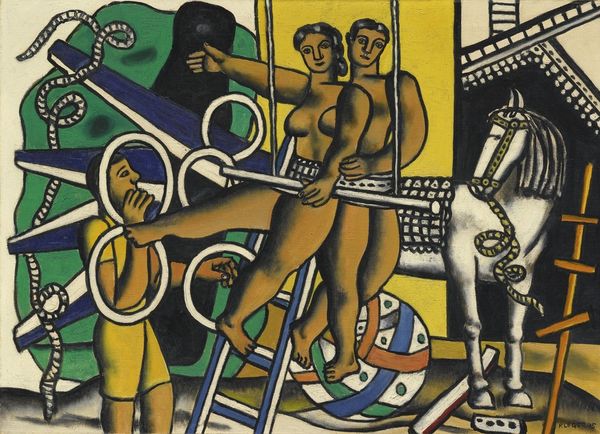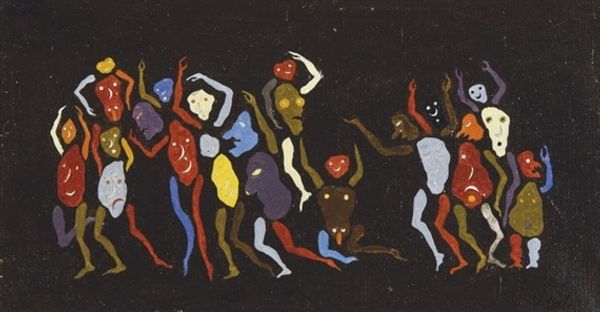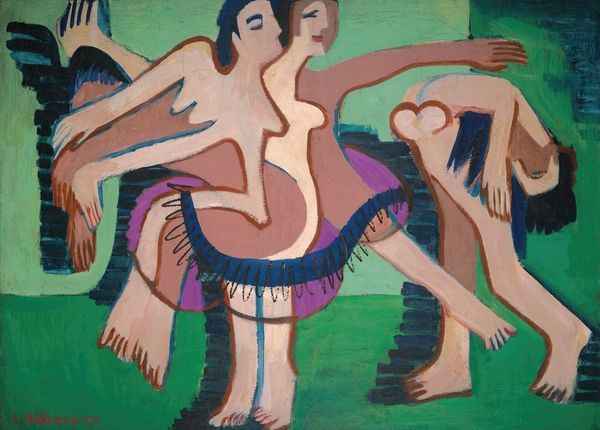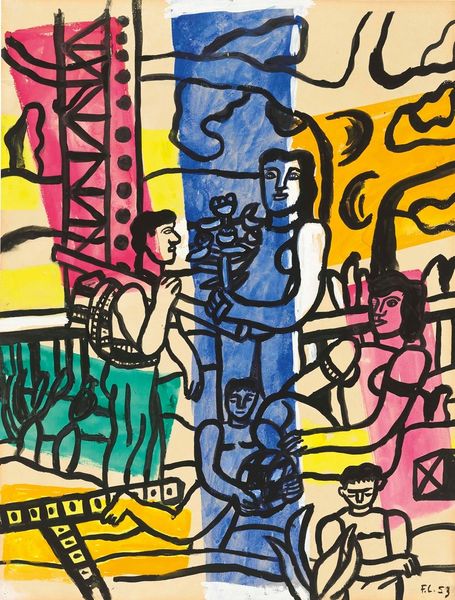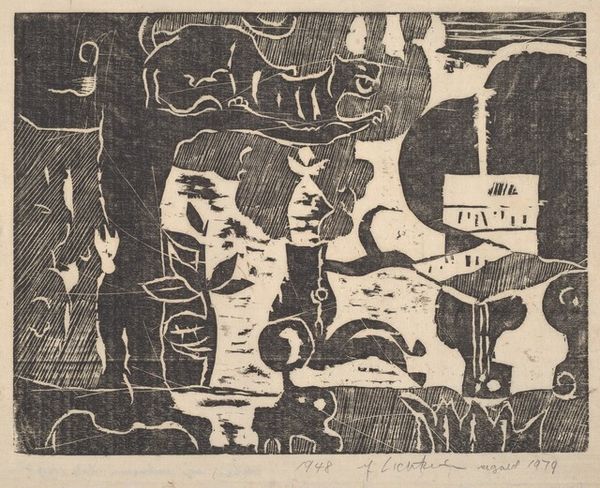
tempera, painting
#
tempera
#
painting
#
painted
#
figuration
#
oil painting
#
geometric
#
genre-painting
Copyright: Public domain
Curator: The artwork before us, entitled "Vásár" or "Market" by Lajos Vajda, was realized in 1936 using tempera. What is your immediate reaction to its compositional elements? Editor: There's a striking ambiguity to it. The stylized figures seem caught between gaiety and menace. The restricted color palette and almost mask-like faces contribute to this unsettling effect. Curator: Absolutely. Notice how the planes intersect without clearly defining space. Vajda uses simplified forms, almost geometric, which creates a tension within the representational subject matter. Consider how this abstraction challenges conventional depictions of market scenes. Editor: The historical context is crucial here. The 1930s in Europe were a period of profound social and political unrest. Markets were not simply places of commerce; they were hubs of social interaction, potentially breeding grounds for dissent, under the watchful eyes of authority. Is Vajda perhaps capturing this tense undercurrent? Curator: A compelling argument. However, formally, it is the flattened perspective and limited tonal range that command my attention. Observe how the figures appear almost like flattened cut-outs arranged on a single plane. This creates a decorative quality, paradoxically heightening the emotional detachment. Editor: But is it truly detached? Or is this a stylized scream reflecting the growing unease felt by the population? The figures, although simplified, wear clothing and postures suggesting a certain social hierarchy, a theme so often amplified, or even satirized, during times of great social divide. Even the bull's head on the wall, like some strange trophy, speaks to this in the context of rising authoritarianism across Europe. Curator: The symbolism you mention resonates within Vajda’s wider body of work. I suggest the composition mirrors his personal journey—his focus on reduction creates a sort of formal scream! It anticipates the wartime horrors and resonates deeply with Hungarian existential angst during the interwar period. Editor: And, of course, to experience and view "Vásár" now, in this setting, changes the context again. Museums create their own narrative through display, inviting further interpretations about Hungarian identity. Curator: Precisely. And by deciphering the painting's aesthetic architecture, one gains a richer understanding of both its construction and possible intent. Editor: It is a reminder that, irrespective of our interpretations, “Vásár” occupies its space in an ongoing and ever evolving narrative.
Comments
No comments
Be the first to comment and join the conversation on the ultimate creative platform.
